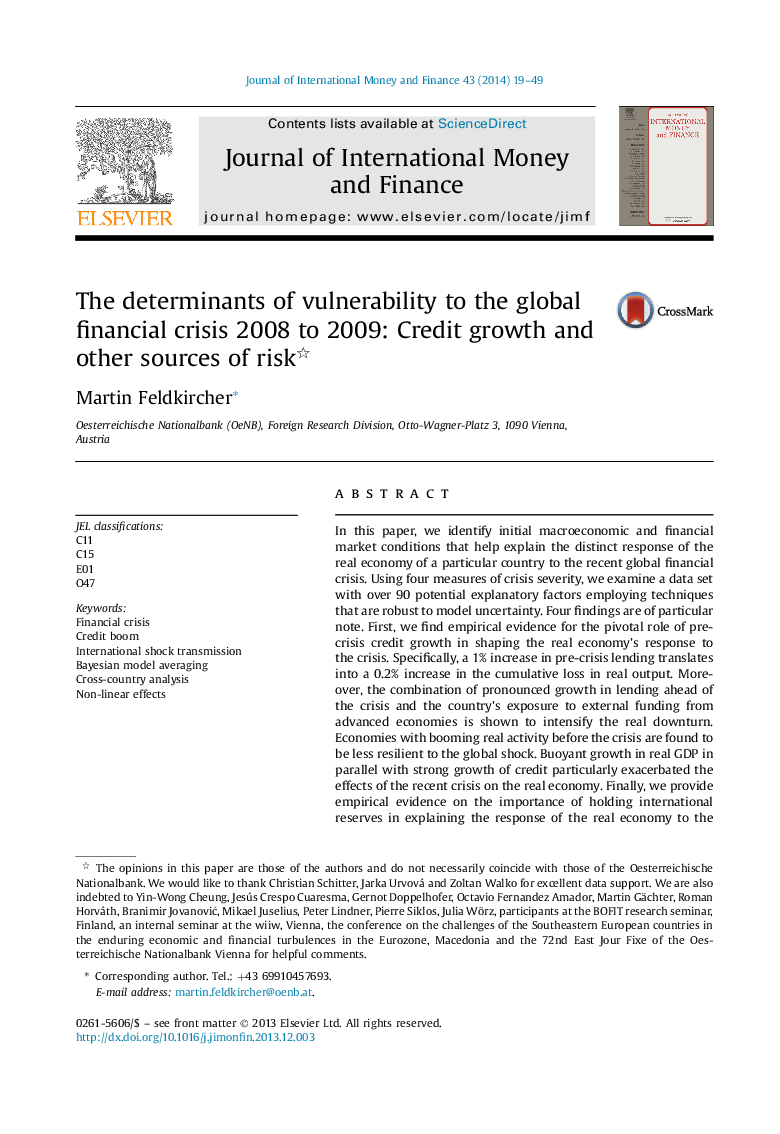| Article ID | Journal | Published Year | Pages | File Type |
|---|---|---|---|---|
| 963800 | Journal of International Money and Finance | 2014 | 31 Pages |
•We examine cross-country differences in crisis severity during the global crisis 2008.•We employ four different measures of crisis severity and 90 explanatory variables.•The most important driver of cumulative loss in real GDP is pre-crisis credit growth.•Strong pre-crisis credit growth and exposure to external funding is harmful.•Booms in real activity prior to the crisis tend to make countries more vulnerable.
In this paper, we identify initial macroeconomic and financial market conditions that help explain the distinct response of the real economy of a particular country to the recent global financial crisis. Using four measures of crisis severity, we examine a data set with over 90 potential explanatory factors employing techniques that are robust to model uncertainty. Four findings are of particular note. First, we find empirical evidence for the pivotal role of pre-crisis credit growth in shaping the real economy's response to the crisis. Specifically, a 1% increase in pre-crisis lending translates into a 0.2% increase in the cumulative loss in real output. Moreover, the combination of pronounced growth in lending ahead of the crisis and the country's exposure to external funding from advanced economies is shown to intensify the real downturn. Economies with booming real activity before the crisis are found to be less resilient to the global shock. Buoyant growth in real GDP in parallel with strong growth of credit particularly exacerbated the effects of the recent crisis on the real economy. Finally, we provide empirical evidence on the importance of holding international reserves in explaining the response of the real economy to the crisis. The accumulation of international reserves mitigated the harmful effects of financial stress on the real economy, in particular when domestic funding via credit is abundant. The results are shown to be robust to several estimation techniques, including those allowing for cross-country spillovers.
